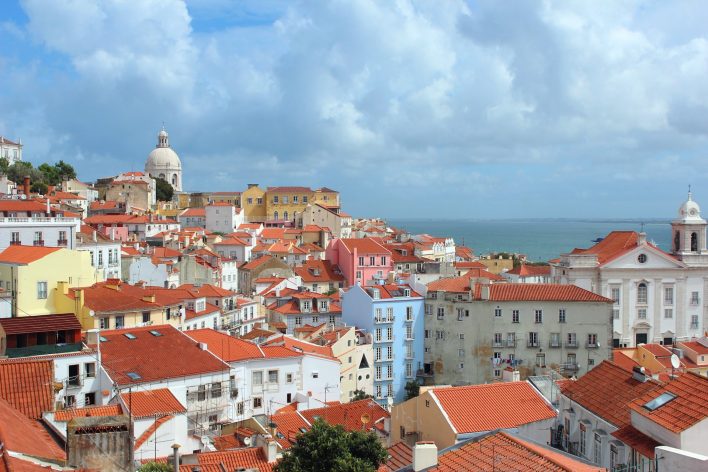
The Portuguese language is an interesting and rich linguistic landscape that connects cultures around the world. From its origins in Portugal to the diverse countries where it is spoken today, the language has a storied history with fascinating facts about its growth and evolution. Here are some of the most interesting facts about this unique language.
10 Surprising Facts About the Portuguese Language
- Portuguese is the sixth most spoken language in the world, with more than 200 million native speakers worldwide. It is also the official language of nine countries, including Brazil and Portugal.
- The Portuguese vocabulary includes many words from other languages like Arabic, French, Galician, and Spanish. These loanwords will often have slightly different spelling and pronunciation than their original language.
- Portuguese has two main dialects: European Portuguese (also known as “Portugal’s language”) and Brazilian Portuguese. The differences between the two can be subtle, but they are noticeable to native speakers.
- Portuguese is full of unique sounds that don’t exist in other languages. This includes “ng”, as in the word “linguagem” (language).
- Portuguese is a phonetic language, meaning that words are pronounced exactly how they are spelled. There are no silent letters or tricky combinations of consonants that change the pronunciation.
- The Portuguese language has its own set of punctuation marks, including the “til” (ñ) and the cedilla (ç).
- Portuguese is a Romance language, making it closely related to languages like Spanish, Italian, and French.
- In Portugal, there are multiple dialects of the language that vary slightly by region. For example, the dialect spoken in Lisbon is often slightly different than that heard in Porto.
- Portuguese was once an international language, especially during its golden age of exploration and colonization. As a result, it has influenced languages in places as far away as India, Macau, and Mozambique.
- Portuguese is one of the easiest languages for English speakers to learn, as it shares many similarities with English. This includes common words and phrases like “good morning” (bom dia) and “how are you?” (Como estás?).
The History and Use of Portuguese Around the World
Portuguese is a Romance language that originated in the Iberian Peninsula. It is the official language of Portugal, Brazil, Angola, Mozambique, Guinea-Bissau, Cape Verde, and São Tomé & Príncipe. Additionally, it is also spoken by significant minorities in countries such as Macau (China), the United States, East Timor, and Goa (India). Portuguese translation service is a part of the Ibero-Romance group that evolved from several dialects of Vulgar Latin in the medieval Kingdom of Galicia and later spread throughout the world.
The language has its roots in Latin, as it developed directly from Vulgar Latin in the 5th century. Portuguese slowly started to replace Galician-Leonese in the Iberian Peninsula, and by the 15th century, it had become firmly established as an official language. In 1494, Portugal and Spain signed the Treaty of Tordesillas which resulted in a split of their colonial empires, with Portugal claiming Brazil and other countries in the Americas and East Africa. This marked the beginning of a period of rapid expansion for the Portuguese, as it spread to new colonies and was adopted by traders, merchants, missionaries, and other travelers.
In the present day, Portuguese is still one of the most widely spoken languages worldwide with over 220 million native speakers. It is especially prevalent in Brazil, with nearly 200 million speakers, and is the most common language in South America. In addition, it has also spread to other regions of the world, including Africa, Europe, Oceania, and Asia.
The dialects of Portuguese vary between countries but they are generally mutually intelligible. There are two main divisions: European Portuguese (spoken in Portugal and its former colonies) and Brazilian Portuguese (spoken in Brazil and its former colonies). There are also some minor variations within each of these divisions.
Language is considered to be a useful tool for international communication, particularly in the business world. It is used by millions of people daily for communication between countries such as Portugal, Brazil, Angola, Mozambique, and Cape Verde. As a result of its large number of speakers, Portuguese has become the second-most spoken language in the Southern Hemisphere after Spanish. In addition, it is one of the official languages of the European Union and is used in diplomatic missions throughout the world.
Portuguese has been an important part of world culture for centuries and continues to be a major language in the 21st century. It is the language of literature, music, art, food, and tradition. With its widespread use in so many countries around the world, Portuguese has become an invaluable tool for international communication and understanding.
As more people learn and adopt Portuguese as their native language, the rich diversity of people, cultures, and ideas that it brings together will only become stronger. It is a testament to the power of language and its ability to bring people from different places and backgrounds together.